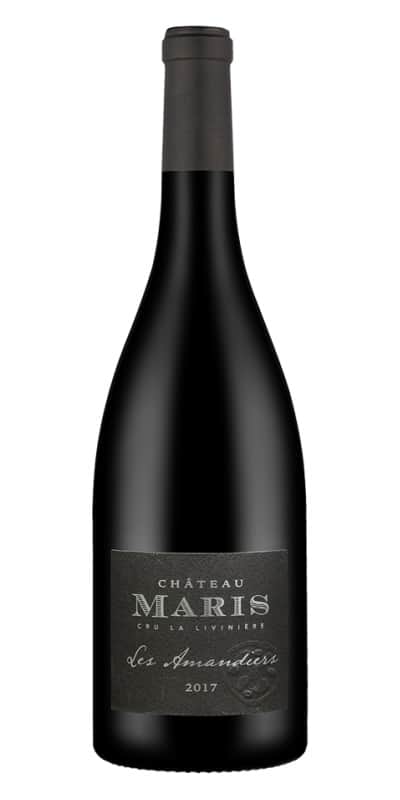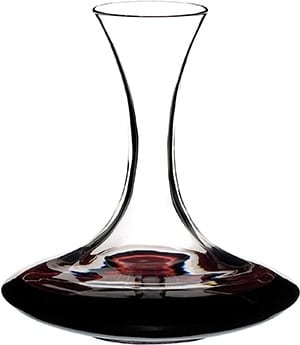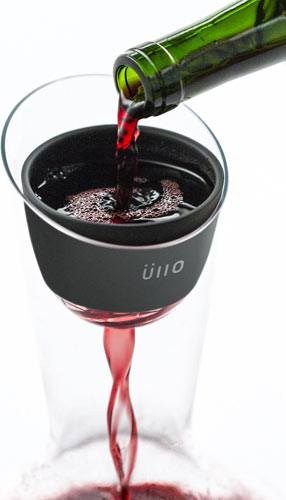Wine Without Sulfites: What Options Are There?
Worried about the effects sulfites might have on your health? We take a look at the various options you have as a wine lover.
In today's guide we explain why sulfites are an unfortunate necessity in wine and what you can do to limit your intake of them.
But, don't worry you have lots of options!
Is There Such a Thing as Wine Without Sulfites?
Let me just start off by saying that there is no such thing as wine without sulfites and despite what you might hear there are no "sulfite free" wines on the market.
This goes for both red and white wines.
Though red wines have substantially higher levels of sulfites than white wines.
The reason all wines contain sulfites is because they develop naturally as a by-product of fermentation. A process that all wines go through in order to become alcoholic.
This means they are present in each and every wine, beer, and cheese (or anything else that goes through fermentation for that matter).
These are naturally occurring sulfites and are generally present in very small quantities (anywhere ranging from 6 to 40 parts per million).
In addition to the naturally occurring sulfites, many winemakers will intentionally add more sulfites to the wine to prevent it from spoiling.
The added sulfites prevent oxidation (browning) and increase the shelf life of the wine, allowing it to age and develop it’s full flavor potential.
This practice goes as far back as ancient Egypt.
In addition to wine, sulfites are also added to many other types of processed foods such as olives, jams, pickles, canned seafood, maple syrup and many others.
Should I Avoid Sulfites or Be Concerned About Them?
In most cases, the answer is no.
For the majority of people added sulfites do not present a problem and are perfectly fine to consume.
If you are able to eat other foods that contain high amounts of sulfites (such as bacon, raisins, etc.) then you should not have a problem.
If sulfites were an issue for you and you were able to eat those foods, you would have certainly noticed it by now.
Having said that, there is very small amount of the population (about 1%) that has a sensitivity towards sulfites. Severe asthma sufferers can have problems with sulfites, for example.
Ingesting sulfites can mean serious discomfort, respiratory problems, hives, swelling, and gastrointestinal discomfort for these individuals that typically starts after 20 to 30 minutes after consuming sulfites.
This is why the FDA now requires wines to carry a “contains sulfites” warning label for wines, beers, and spirits that contain more than 10 ppm of sulfites.
In the video below, Rob Moshein does a good job explaining the “mystery of sulfites” in relation to allergies and whether you should be concerned about them.
I'm Sensitive to Sulfites. What Options Do I have?
Thankfully, there are options available that don't cost the earth.
In fact, the second option we suggest below should actually be part of every wine drinkers' wine drinking ritual.
Option 1: Look for “No Sulfite Added” (NSA) Wines
The best option is to look for wines that have no sulfite added.
It can often be difficult to find a good NSA wine simply due to the fact that it is a lot more difficult to age these types of wine.
They are often more fragile and may spoil easily as a result of the missing sulfites.
It is also recommended to consume the wine within 18 months of bottling for this reason and it is extremely important that they are stored correctly.
We recently published an awesome list recommending our favorite organic wines and wineries.
Option 2: Use a Large Decanter and Aerate Your Wine
Aerating your wine will allow the excess sulfur dioxide to escape. You can do this using a decanter.
You can also use a specialist wine aerator that aerates wine as it is poured.
Decanting your wine will not only allow the sulfur to escape, but it will also make certain wines taste better.
How long to decant your wine is a topic that could warrant another article, but as a general rule of thumb you would want to aerate older (10 years or more) and more fragile wines for shorter periods of around 30 minutes.
While a younger and more vigorous wine should be aerated slightly longer (an hour or more). This is plenty of time for the excess free sulfur in your wine to react with oxygen in the air and escape the wine.
Option 3: Use a Dedicated Wine Purifier
New to the market in recent years is the wine purifier or filter.
Using a special type of filter, the purifier can remove unwanted elements from wine while leaving the good stuff untouched!
They were designed specifically for the removal of excess sulfites but also do a great job in removing sediment too.
The best example of a wine purifier on the market right now is the Ullo. It's easy to use and also works as an aerator. The only downside is the lack of reusable filter which makes it reasonably expensive for a regular wine drinker.
See how it works and what we think of it in our Ullo guide.
Conclusion
For most people, drinking wine with sulfites is not an issue and should not really be a concern.
You are likely consuming foods on a daily basis that have a far higher sulfite content.
The best tip that we have is to simply look for wine from a reputable producer since they have nothing to gain by adding excess sulfites to the wine other than to stabilize it so that it ages nicely.
Putting too much sulfites into the wine makes it taste badly, and that is the last thing a winemaker is looking for.
However, if you're one of the unfortunate few that are sensitive to sulfites then all is not lost.
There are some amazing organic wines that have lower sulfite content than most wines. Aerating and decanting wines is also a great way of reducing sulfite content.






